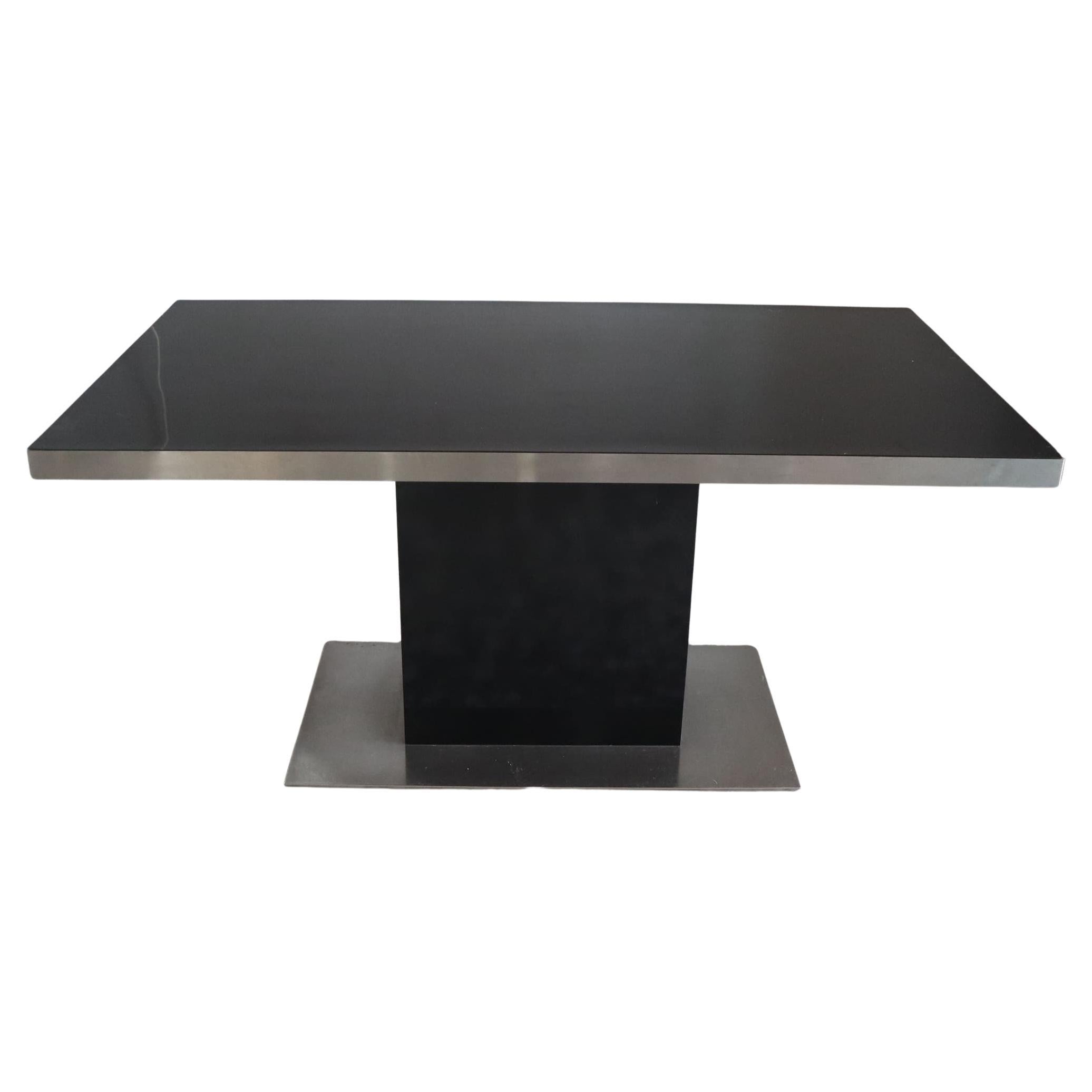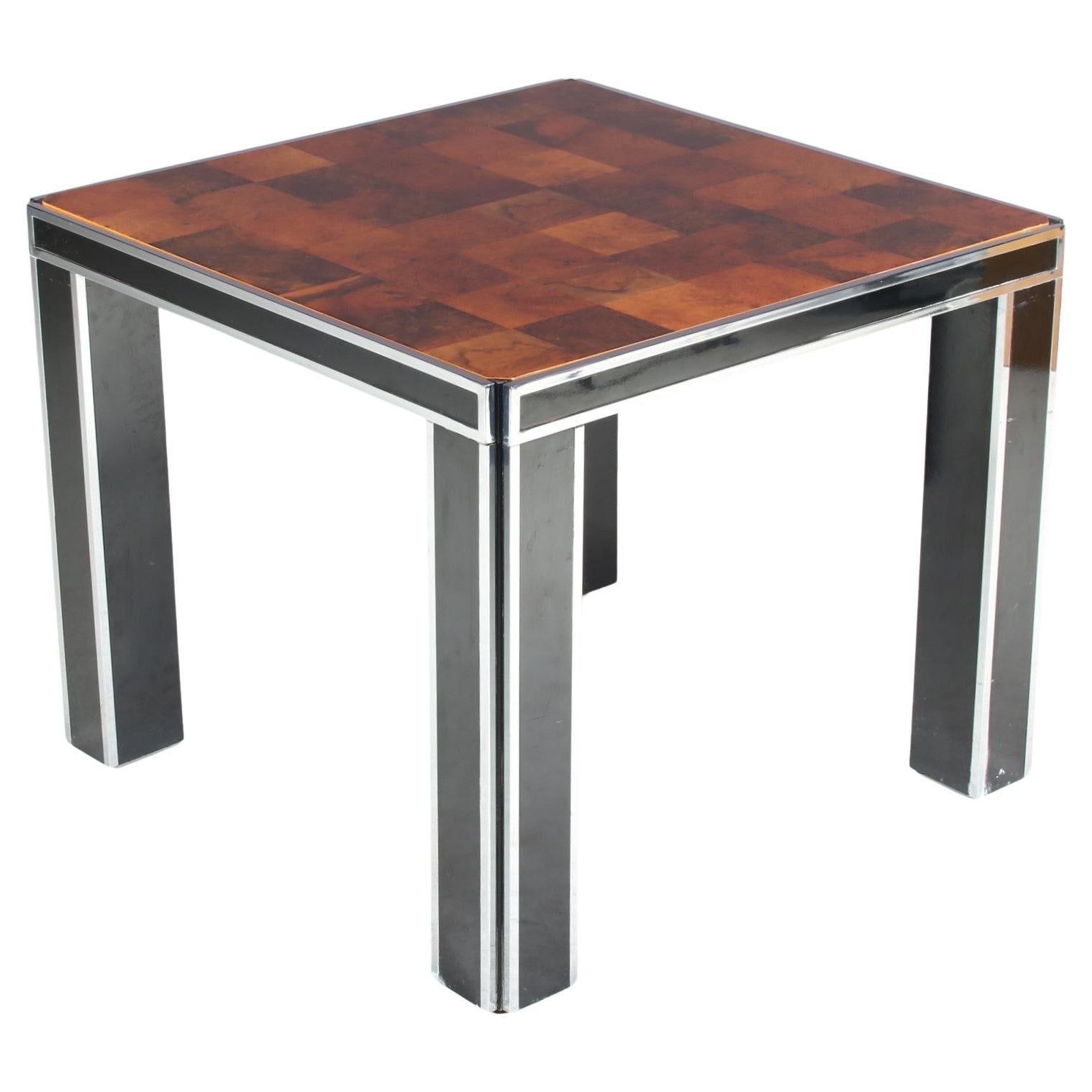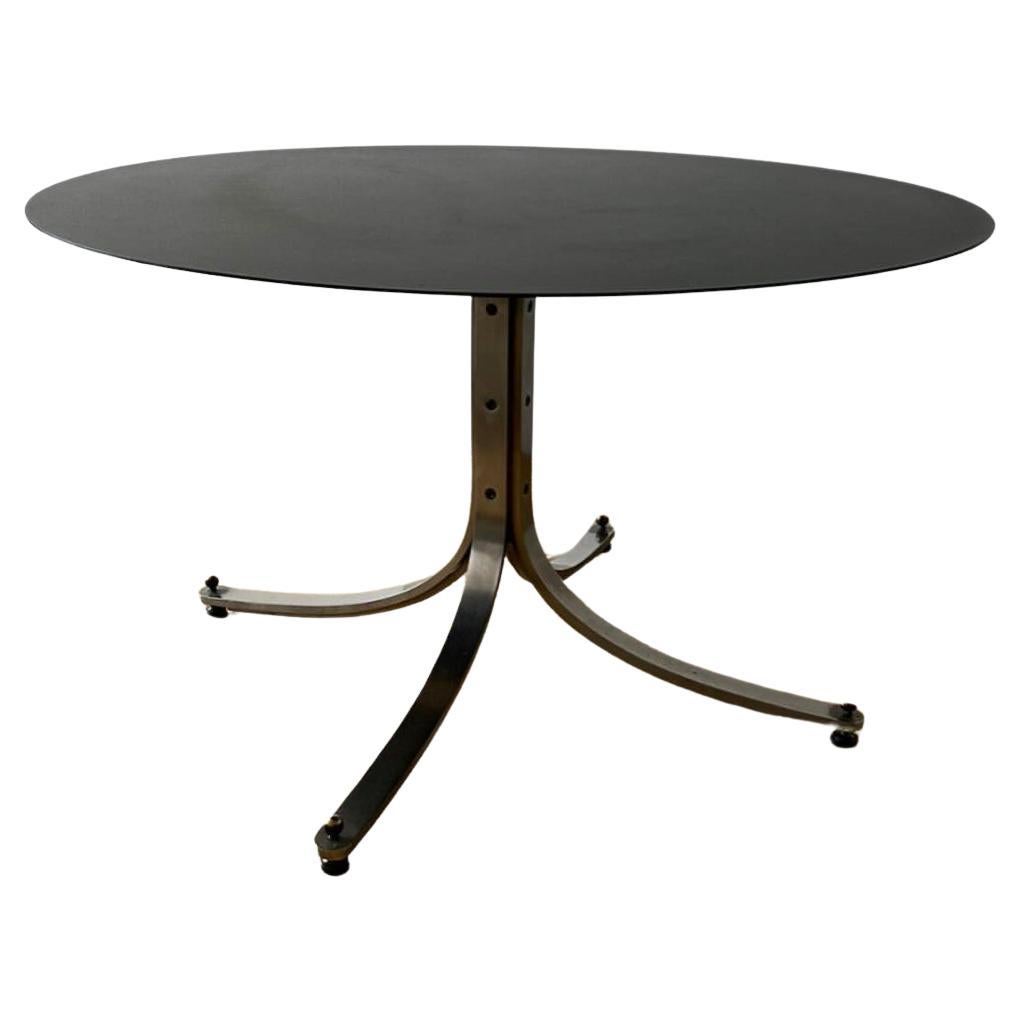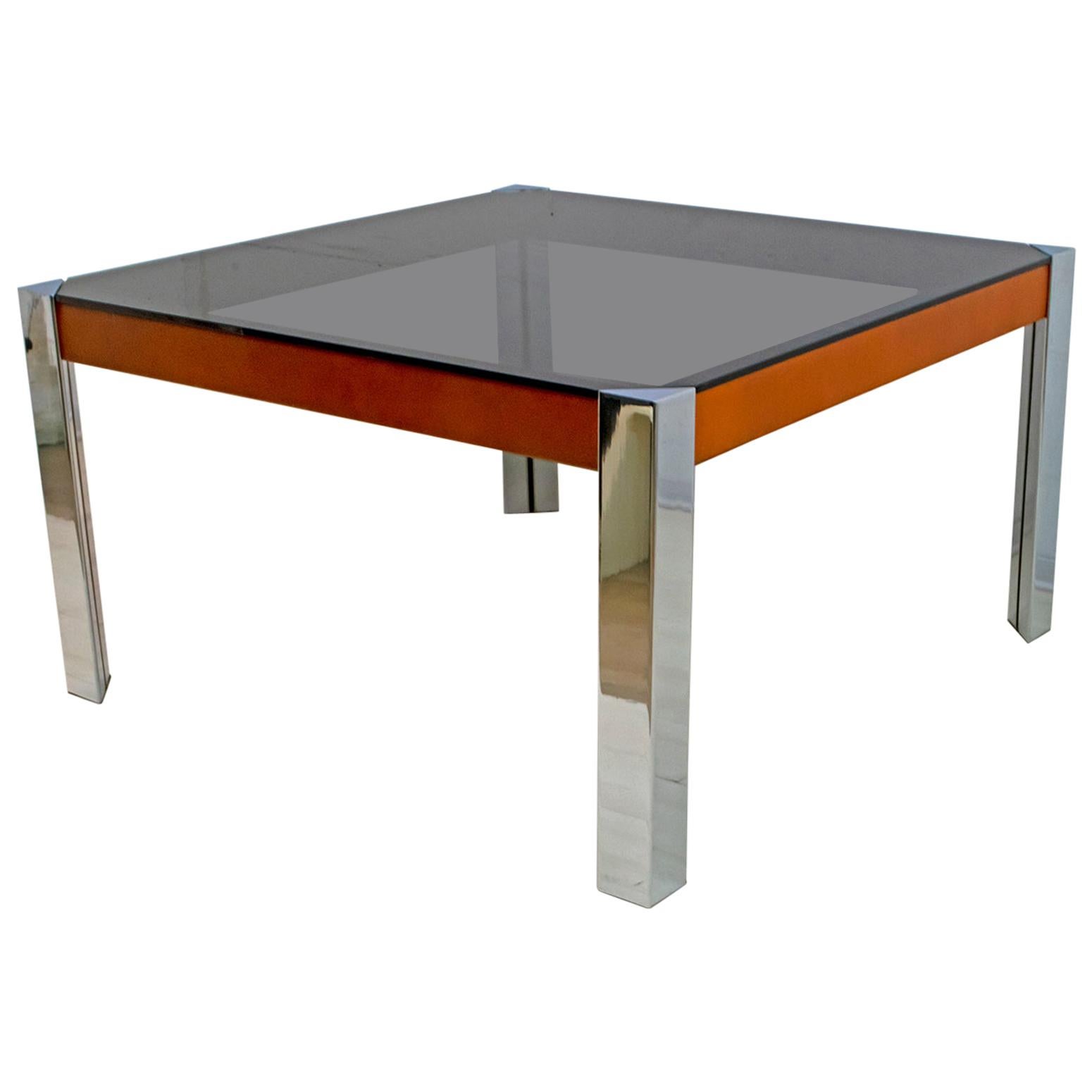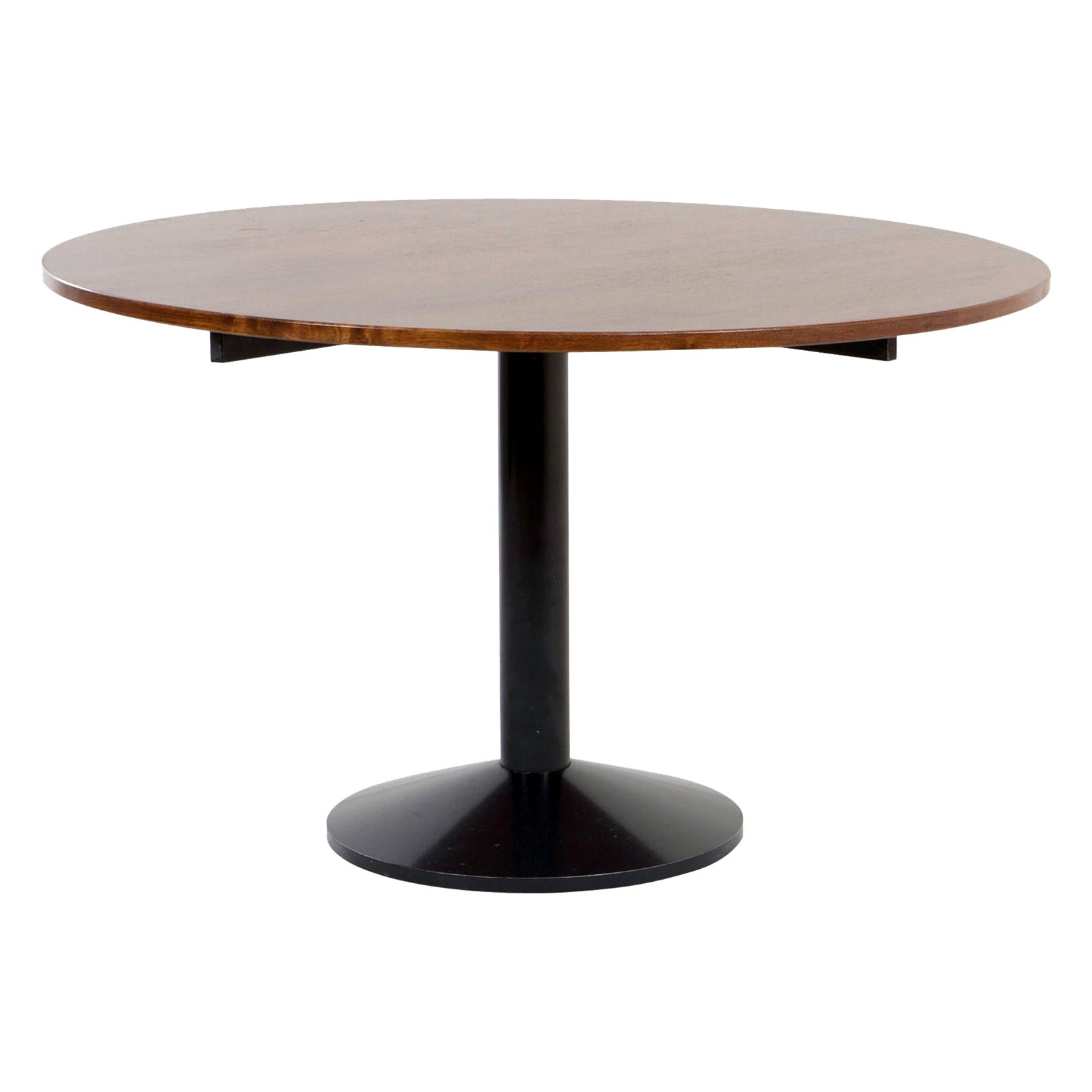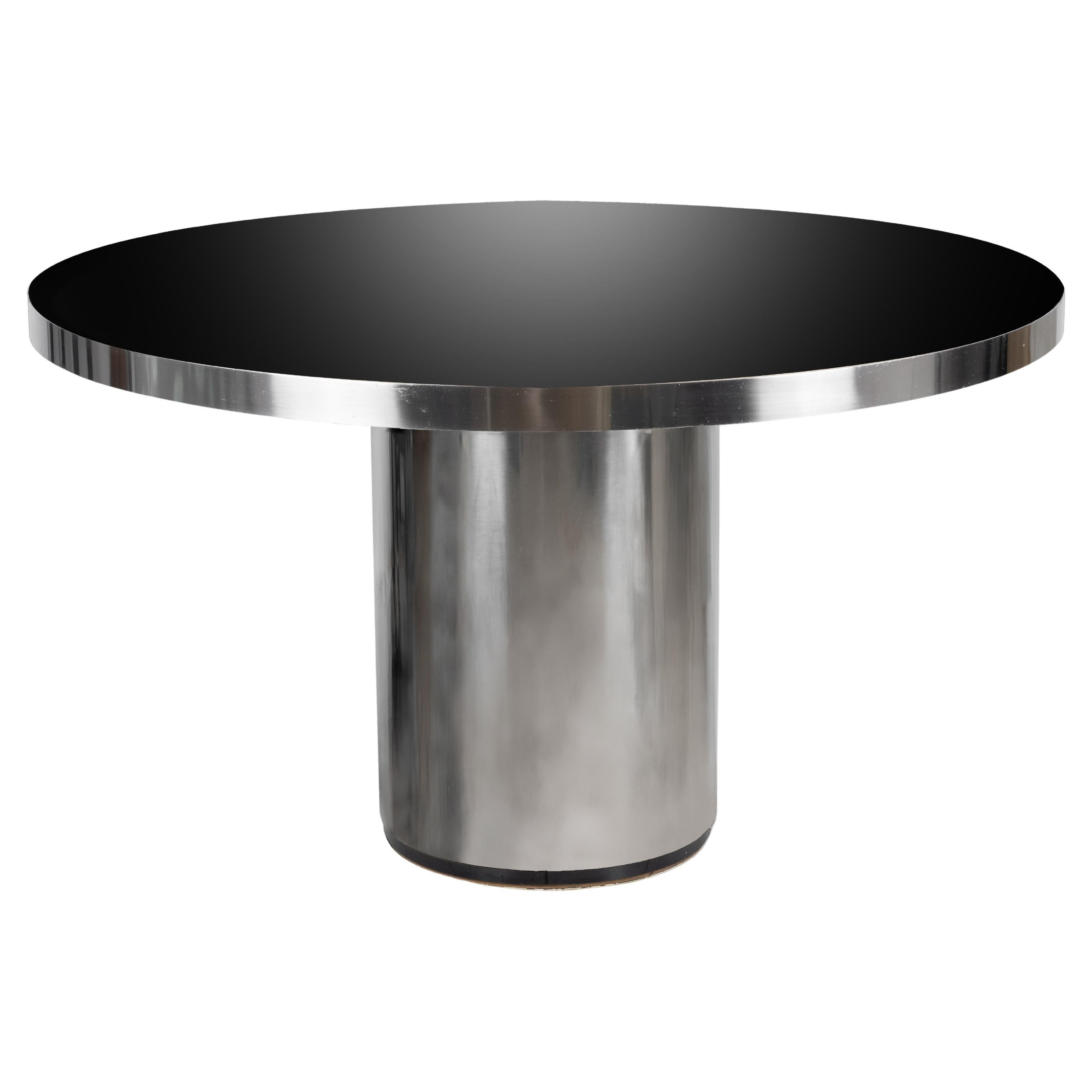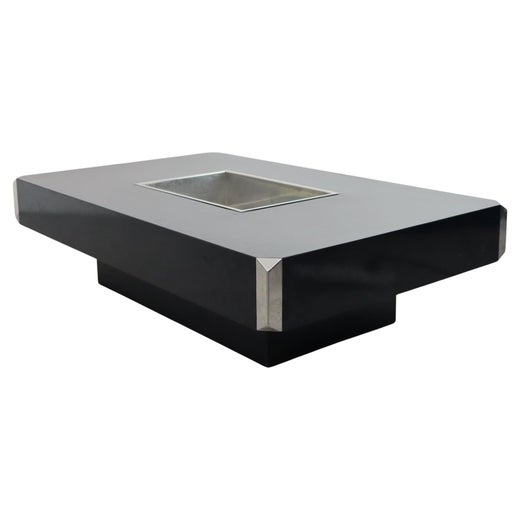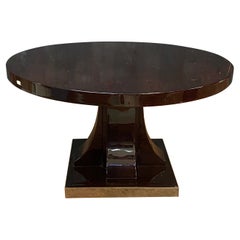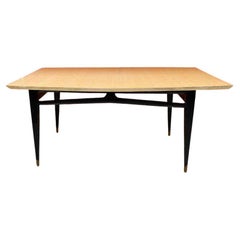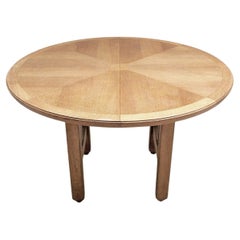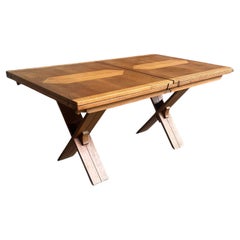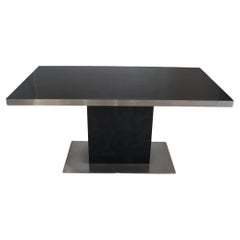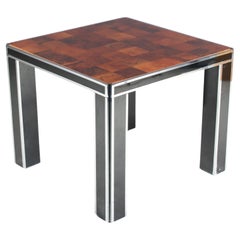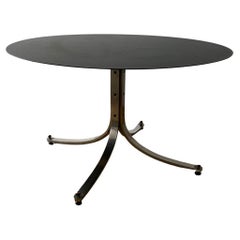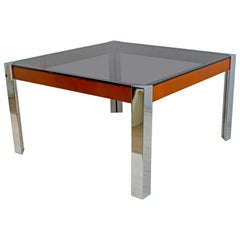Willy Rizzo, table in Lacquered Wood and steel for Mario Sabot, Italy
About the Item
- Creator:Mario Sabot (Cabinetmaker),Willy Rizzo (Designer)
- Dimensions:Height: 27.96 in (71 cm)Diameter: 50.4 in (128 cm)
- Style:Mid-Century Modern (Of the Period)
- Materials and Techniques:
- Place of Origin:
- Period:
- Date of Manufacture:circa 1960
- Condition:Wear consistent with age and use. Minor fading.
- Seller Location:Mouscron, BE
- Reference Number:1stDibs: LU7463231999832
Willy Rizzo
Renowned Italian furniture designer Willy Rizzo is celebrated for having produced eye-catching, sensational showpieces that merged plush fabrics with wood, metal and glass. Influenced by European modernists and drawing on the spare forms and clean lines of the American mid-century modern style, Rizzo prized functionality and simplicity in his dazzling work.
Born in Naples, Rizzo never intended on designing furniture. Instead, he began pursuing photography at the age of 12. By the 1960s, he had become a notable photographer, having captured images of such celebrities as Marilyn Monroe, Fred Astaire and Spanish artist Salvador Dalí. His experience with furniture design came about inadvertently when he moved to Rome in 1966. There, Rizzo rented an apartment with his wife Elsa that he described as "practically uninhabitable." Dissatisfied with the Scandinavian furniture options on offer, Rizzo built sofas, coffee tables and other furniture to suit the space's strong modern vibe. When his friends saw what he had accomplished, they were enamored by his furniture creations and commissioned him to build similar items for them.
The demand for Rizzo’s furniture grew from there. He established a production facility and workshop in Tivoli, just outside of Rome, which grew to house over 150 employees. There, finding inspiration in the work of iconic architects including Ludwig Mies van der Rohe and Le Corbusier, he created more than 30 unique furniture designs. Over the years he opened boutiques around the world to showcase and sell his furniture.
Rizzo prided himself on seamlessly blending the contemporary with the classic. “It was about creating something new for a traditional setting,” he said of his work. From his sleek sideboards to his low-profile side tables, elegant chairs and entire living room sets, Rizzo's style sensibility is evident throughout every detail of his designs.
Rizzo sold his company in 1978 and returned to photography. However, the presence of his furniture resonated into the new century and is sure to impact interior décor enthusiasts into the next. Over the years, high-profile collectors of Rizzo’s work have included French actress Brigitte Bardot, Salvador Dalí and American musician Lenny Kravitz.
On 1stDibs, find a range of vintage Willy Rizzo tables, lighting, seating and storage pieces.
- ShippingRetrieving quote...Shipping from: Mouscron, Belgium
- Return Policy
More From This Seller
View AllVintage 1940s European Art Deco Gueridon
Nickel
Vintage 1960s European Mid-Century Modern Dining Room Tables
Brass
Vintage 1970s French Mid-Century Modern Dining Room Tables
Oak
Vintage 1950s French Mid-Century Modern Dining Room Tables
Oak
Vintage 1960s European Mid-Century Modern Dining Room Tables
Walnut
Mid-20th Century French Mid-Century Modern Dining Room Tables
Marble
You May Also Like
Vintage 1970s Italian Mid-Century Modern Tables
Steel
Vintage 1970s Italian Mid-Century Modern Dining Room Tables
Metal, Chrome
Vintage 1960s Italian Mid-Century Modern Dining Room Tables
Stainless Steel
Vintage 1970s Italian Mid-Century Modern Dining Room Tables
Brass, Chrome
Vintage 1950s Italian Mid-Century Modern Tables
Metal
Vintage 1970s Italian Dining Room Tables
Metal
